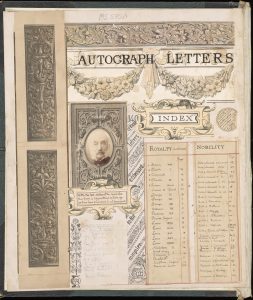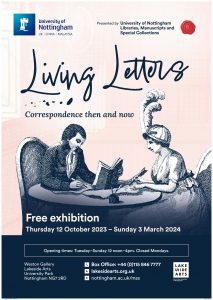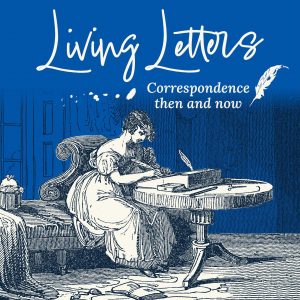October 12, 2023, by Kathryn Steenson
Living Letters
We may be living in the world of WhatsApp, email and TikTok, but our new exhibition Living Letters shows that letters still very much have their place in society. With examples from the medieval period to the present, the personal and the professional, sent by the famous and the forgotten, the exhibition captures the variety of human lives.
Taken from the holdings at Manuscripts and Special Collections, on display are letters from two Queens of England alongside letters from ordinary people, including a marriage proposal letter from missionary John Hoyland and the response he received. You’ll have to visit the gallery to see whether she accepted!
The exhibition addresses past assumptions about work and gender through letters: male scribes and land agents feature alongside female paid companions and secretaries. Also on display are examples of the very popular letter-writing manuals of the nineteenth century, including Beeton’s Complete Letter Writer for Ladies and Gentlemen. Samuel Beeton was a successful publisher and husband of Mrs Isabella Beeton (of the Book of Household Management fame, who is now possibly more well-known than her husband). His book on letter writing and hers on household management were two in a series of Beeton’s guides aimed at the Victorian middle class.

Scrapbook of autograph letters, newspaper cuttings, illustrations and manuscript notes. Ref MS 575/1
A central theme of the exhibition concerns the afterlives of letters – what happens to them once they have been written and sent. T.C. Hine’s elaborately collated album of letters from ‘Notabilities’ presents an eclectic set of letters chosen for their celebrity authors. Nottingham architect T C Hine, who designed houses in The Park Estate, the Park Tunnel, the 19th century renovations to Nottingham Castle, and parts of the Nottingham General Hospital, was also an avid autograph collector and wrote to many of the celebrities of his day in hopes that they would send a letter with their signature. This is the first time the album has been on display thanks to a recently finished a conservation project, funded by the National Manuscripts Conservation Trust, as it was too fragile for people to access. Hines’s hobby is contrasted with the deep sentiment of Albert Tugendhat, who lovingly stored letters from his wife and family in his wallet that he received when held in an internment camp in the 1940s.
Professor Lynda Pratt said: “This exhibition reveals how correspondence is powerful in its ability to connect with and impact on the lives of others. It also illuminates how letters are deeply vulnerable, fragile objects whose preservation is liable to the vicissitudes of time, fashion, and chance.”
The exhibition will run from 12 October 2023 to 3 March 2024 at the Weston Gallery, Lakeside Arts Centre. More information is available at https://www.nottingham.ac.uk/manuscriptsandspecialcollections/exhibitions/living-letters.aspx
Living Letters has been curated by Manuscripts and Special Collections and Professor Lynda Pratt from the School of English.
No comments yet, fill out a comment to be the first



Leave a Reply